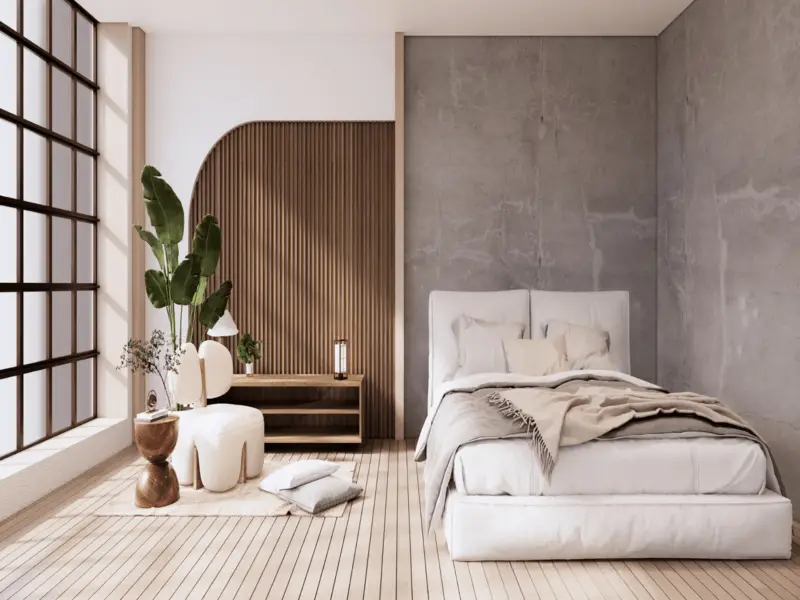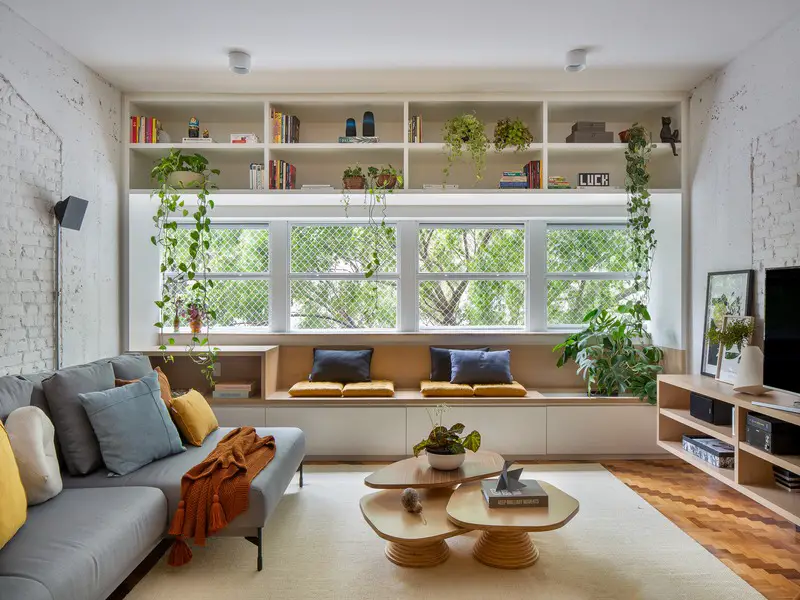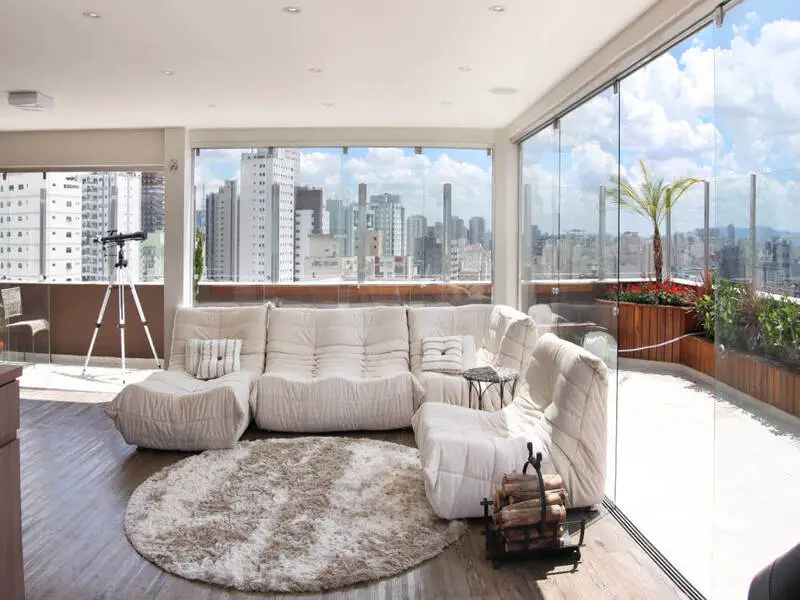Japanese minimalism has become increasingly popular in interior decoration. Its wabi-sabi style is inspired by traditional Japanese aesthetics, which values simplicity, imperfect beauty, and connection with nature. In this article, we will explore how to incorporate wabi-sabi style into your decoration and transform your home into a calm and welcoming environment.
Get to know the wabi-sabi style
Wabi-sabi style is a design trend that is gaining popularity across the world. It is inspired by a Japanese philosophy that values simplicity, humility, and the beauty of imperfection. The essence of wabi-sabi is to create an uncluttered environment that focuses on the essential and natural, while incorporating items that have meaning and purpose.
In wabi-sabi decoration, the color palette is typically limited to neutral and earthy tones, such as beige, gray, and white. These colors help to create a calming atmosphere that promotes relaxation and introspection. The idea is to use natural materials that have a tactile quality, such as wood, stone, and ceramics, to bring a sense of warmth and organic texture to the environment.
Another key aspect of wabi-sabi style is to embrace imperfection. This means that objects that show signs of wear and age are valued over those that are new and pristine. Imperfections are seen as part of the object’s story and give it a unique character and beauty. This approach to decoration encourages a slower, more mindful approach to life and consumption, where objects are cherished and cared for over time.
Simplify your decoration
The main idea of Japanese minimalism is to simplify decoration. This means removing unnecessary objects and keeping only the essentials. In a wabi-sabi environment, decoration should be minimalist but not empty. Each object should have a purpose and a story. The colors should be soft and neutral, such as shades of white, gray, and beige.
By simplifying decoration, you can create a cleaner, more organized, and visually pleasant environment. After all, the fewer objects are exposed, the less chance there is of creating visual clutter. In this way, you can value each object that you have chosen to decorate the environment, giving them due prominence.
A good tip is to choose furniture and decorative objects that are functional and can have different uses. For example, a chest can be used as a coffee table and still serve as storage. Additionally, when choosing objects, prefer those that have simple and clean shapes, without many details or ornaments.

Value nature
As mentioned earlier, the connection with nature is one of the main characteristics of the wabi-sabi style. Therefore, it is important to value the presence of natural elements in decoration. This includes plants, stones, wood, natural fabrics, among others.
Plants are an excellent option to bring a bit of nature indoors. They help purify the air and bring more life to the environment. Additionally, plants have different shades of green, which can help create a soft contrast with the neutral colors of decoration.
Another option is to use stones and rocks for decoration. They have different textures and shades, which can help create an interesting contrast with the rest of the decoration. Additionally, stones can be used as supports for decorative objects or as weight for wallpaper, for example.
Wood is another natural element widely used in wabi-sabi decoration. It brings a rustic and organic touch to the environment and can be used in different objects, such as tables, shelves, chairs, among others. Additionally, wood can also be used in wall or floor coverings.
Prioritize functionality
Functionality is a key aspect of Japanese minimalism and is often prioritized in decoration. The idea is to choose objects that have a clear purpose and are effective in their function, while also being aesthetically pleasing. This approach helps to create a more practical and efficient environment that is well-suited for everyday use.
One way to prioritize functionality in decoration is to consider the purpose of each object in the space. For example, a sofa should be comfortable and able to accommodate the number of people who will be using it. Similarly, a dining table should be the appropriate size for the number of people who will be using it regularly.
Another way to prioritize functionality is to organize objects in a way that makes them easy to access and use. This can be achieved by using storage solutions, such as shelves or cabinets, to keep items organized and tidy. In this way, objects can be easily found and used as needed, without creating clutter or unnecessary frustration.
Additionally, functional decoration can also extend to the materials and finishes used in a space. For example, choosing durable and easy-to-clean materials, such as leather or wood, can make maintenance and cleaning easier, while also providing a more practical solution for everyday use.
By prioritizing functionality in decoration, you can create a space that is both beautiful and practical. This approach can help to simplify daily routines and make life more efficient, while also reducing stress and enhancing overall well-being.
Bet on natural lighting
Natural lighting is a fundamental element in wabi-sabi decoration. It brings life to the environment, values the presence of natural elements, and helps create a more comfortable and welcoming atmosphere.
In addition, natural light is an excellent way to save electricity and reduce costs on the electricity bill. Therefore, it is important to make the most of natural light by leaving windows and doors open, using light and sheer curtains, and avoiding blocking the entry of light with objects and furniture.
If good natural lighting is not possible, opt for bulbs with a warmer, more yellowish tone, which bring a sense of coziness to the environment. Avoid very white or cold bulbs, which can make the atmosphere more impersonal and cold.
Find beauty in imperfection
In the wabi-sabi style, finding beauty in imperfection is a core principle. This approach to decoration values the marks of time and life on objects and furniture, seeing them as evidence of their unique history and character. Scratches, dents, and other imperfections are not only accepted but celebrated as part of the object’s story.
This appreciation for imperfection can also be applied to the choice of materials. Natural materials, such as wood, stone, and clay, are often preferred in wabi-sabi decoration because they have a tactile quality and present unique textures and appearances. In addition, opting for handmade decorative objects and furniture can add to the authenticity and personality of the environment.
This approach to decoration is not only about accepting imperfection, but also about finding beauty in it. Imperfections are seen as a source of character and individuality, adding depth and interest to the space. This can be seen, for example, in the use of distressed finishes on furniture or in the use of imperfectly shaped ceramics in tableware.
By finding beauty in imperfection, the wabi-sabi style encourages us to slow down and appreciate the world around us. It reminds us that nothing is perfect, and that this imperfection is what makes life and objects interesting and unique. This approach to decoration encourages us to value authenticity and character, creating environments that are not only beautiful but also meaningful.
Create a welcoming environment
Creating a welcoming environment is a key aspect of wabi-sabi decoration. This approach seeks to create a peaceful and comfortable space that promotes relaxation and well-being. To achieve this, attention must be paid to details such as the temperature of the environment, the layout of furniture, and the organization of objects.
Keeping the environment clean and organized is essential for creating a welcoming atmosphere. A well-organized space can make a room feel more spacious, open, and inviting. Additionally, ensuring that the temperature of the environment is pleasant and comfortable can also help create a cozy and relaxing atmosphere.
To create a welcoming environment, it’s also important to consider the decorative objects used in the space. Soft cushions, warm blankets, and plush carpets can add comfort and warmth to the room, making it a more inviting and relaxing space. Natural elements, such as plants, can also bring a sense of tranquility to the environment, adding to the calming atmosphere.
The layout of furniture can also play a role in creating a welcoming environment. Furniture should be arranged in a way that promotes relaxation and socializing. For example, placing furniture in a way that encourages conversation or creating a cozy nook with comfortable seating can make the environment more inviting and enjoyable.
In summary, creating a welcoming environment in wabi-sabi decoration involves attention to detail and a focus on comfort and tranquility. By paying attention to the layout of furniture, the organization of objects, and the use of comforting decorative objects, you can create a space that is warm, inviting, and perfect for relaxation.
Conclusion
The wabi-sabi decoration brings a unique and cozy style to any environment. Simplicity, imperfect beauty, and connection with nature are the main pillars of this style, which can be easily incorporated into interior decoration. By following the tips presented in this article, you can transform your home into a peaceful and welcoming environment that reflects your personality and lifestyle. Remember to prioritize natural materials, soft colors, and natural lighting, and to simplify the decoration, keeping only the essential. This way, you can create a cozy, practical, and efficient space that values the beauty of simple and imperfect things. So, do not hesitate to try the wabi-sabi style and see how it can transform your home into a refuge of peace and harmony.




